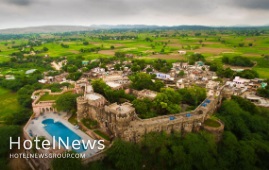
Historic Hotels Around the World you Must Add to your Bucket List Hotel Hill front kesroli - India The 14th century Hill Fort-Kesroli is one of the oldest heritage sites in India The reservation of the rooms of this hotel is done only through the online reservation system, and guests can contact the hotel directly to book the room Only when they want a reservation for the same day. There is no TV in the hotel rooms and there is no room service. In the hotel restaurant, Indian dishes are served along with dishes from other continents to suit most tastes. Also, French, Italian, Chinese and Thai dishes are offered to complete the poolside restaurant buffet. This hotel is an ideal base for visiting the palaces, museums, natural sites and sanctuaries of Sariska and Alwar.
Create: Oct 22, 2022 Edit: Oct 22, 2022 TV
Hotels that we look forward to their exciting opening in 2022 Part 3; Nobu Santorini Hotel- Greece 🇬🇷 The 26th branch of Nobu Hotel in Greece will be opened in Santorini Nubo hotel architect Designed in the traditional whitewashed Cycladic style with minimalistic décor to optimally enhance the dramatic vistas beyond. Nobu Hotel Santorini offers 25 stunning accommodations, all with breathtaking views of the Caldera and the Aegean Sea. It offer a nobu restaurant, luxe spa, fitness center, two level infinity pool and five pool villas Nobu hotel opening this spring is also just 20 minutes from santorini international airport. It also offers a unique blend of Japanese hospitality and stunning Santorini and Whether you’re looking for Nobu Hotel classics or locally packages, explore our offers to find the stay that suits you best.
Create: Oct 22, 2022 Edit: Oct 22, 2022 TV
Hotels that we look forward to their exciting opening in 2022 Part 2 Ritz-Carlton Hotel in NewYork🇺🇸 Ritz-Carlton hotel in Manhattan’s was newly-built from the ground up with 250 guest rooms and 16 luxury penthouse residences. It will feature two new restaurants and a rooftop bar Guest Room Features & Amenities Daily housekeeping service and evening turndown service High-speed wireless Internet access Large flat-screen televisions Same 24 hour laundry services Online Keyless entry via Marriott Bonvoy App Guests can also chill out in the hotel’s signature Ritz-Carlton Spa and Fitness Center. the spa facilities include steam room, sauna, and private lounges to help you escape the hustle and bustle of the city. Visit the modern sensibility of some of the greatest art museums in the world just blocks away
Create: Oct 22, 2022 Edit: Oct 22, 2022 TV
Hotels that we look forward to their exciting opening in 2022 Part 1 CONRAD TULUM RIVIERA MAYA Hotel in Mexico🇲🇽 The hotel is the newest luxury addition to the Hiltons hotels portfolio CONRAD is known for its contemporary style the modern design sets the brand apart from waldorf astoria hotels and symmetry is key element at this particular property hotel. Rooms are arranged in several buildings along the shore line and at the topmost floor, the view of the sea is spectacular The hotel boasts five different restaurant. The main pool bar is the centerpiece of the hotel and in the evening the guests can enjoy drinks while listening to live music or dj performances Guests have multiple options of getting around the hotel they can order a golf car, take a bike or walk along the jungle paths The gym located in the basement of the hotel, yoga and spinning classes are offered throughout the week
Create: Oct 22, 2022 Edit: Oct 22, 2022 TV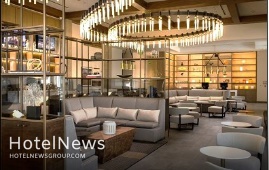
Today announced that it has completed an initial closing of the previously announced portfolio acquisition through its existing joint venture with GIC from affiliates of NewcrestImage. The initial closing included 26 of the 27 hotels totaling 3,533 guestrooms, two parking structures, and various financial incentives. The remaining hotel to be acquired is the currently under construction 176-guestroom Canopy by Hilton New Orleans which is nearing completion, and the joint venture expects to close on the acquisition of the hotel during the first quarter 2022 (collectively with the initial closing referred to as the “Transaction”). The total consideration for the Transaction is comprised of $776.5 million, or $209,000 per key, for the 27-hotel portfolio, $24.8 million for the two parking structures, and $20.7 million for the various financial incentives. The Transaction is expected to be immediately accretive to adjusted FFO per share, generate a stabilized net operating income yield of 8.0% to 8.5% including future capital investment and excluding any ancillary joint venture fees earned by Summit, and be leverage neutral to the Company’s balance sheet while preserving existing liquidity of nearly $450 million.
Create: Jan 15, 2022 Edit: Jan 15, 2022 International News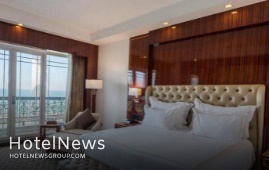
Over 94,000 domestic tourists have stayed in the province during the mentioned time, Jalil Jabari said on Thursday. In nine months, over 16,000 foreign travelers stayed in the province’s accommodation centers and it is estimated that 5,500 foreign tourists will stay in these units in the fourth quarter of the year, the official added. The accommodation centers have generated over 40 job opportunities during the mentioned time as well, he noted. Back in December, Jamshid Hamzehzadeh the head of the Iranian Hoteliers Association announced that following the planned measures, the occupancy rate of the country’s hotels, which had fallen below five percent because of the outbreak of the coronavirus, has reached 45 percent over the past three months. Multiple problems, notably the pandemic, caused a severe impact on the tourism industry, the official explained. Even before the coronavirus outbreak and in 2019, travel was reduced due to heavy rains and flooding across the country, and the hotel industry had to recoup nearly 100 percent of the costs paid for canceled hotel reservations, he added. The Iranian hoteliers have lost 220 trillion rials (about $740 million) over the past two years, he noted. However, some problems have been resolved and the hotels’ condition has improved, he mentioned. Back in October, the official announced that Iranian hotels are ready to receive foreign tourists as the issuance of tourist visas and the flow of foreign tourists from land and air borders would be resumed. Ninety percent of the hotel staff have been vaccinated against the coronavirus, so the hotels are ready to welcome foreign tourists, observing strict health protocols, he said. The main destinations of foreign tourists in Iran are specifically cities such as Mashhad, Qom, Tabriz, Shiraz, Yazd, and Isfahan, and to return to the figure of over eight million incoming tourists before the outbreak of the coronavirus, serious planning is required, the official added. Iraqi tourists will flood the country once the borders open, but attracting tourists from Europe will require some time, he noted. However, he noted that two-thirds of the hotel staff have lost their jobs, he added. Back in September, Hamzehzadeh announced that all employees of accommodation centers across Iran are scheduled to be vaccinated against the coronavirus. “To vaccinate staffs of all accommodation centers, including eco-lodges, apartment hotels, and guest houses, as well as hotels, more coordination with the Ministry of Health is needed,” he added.
Create: Jan 15, 2022 Edit: Jan 15, 2022 Regional News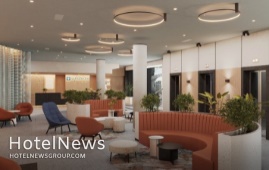
Wyndham Hotels & Resorts, the world’s largest hotel franchising company with approximately 9,000 hotels across nearly 95 countries, continues to expand its global footprint with its entry into Poland with the 205-room upscale Wyndham Wroclaw Old Town. Managed by Mogotel Hotel Group, a leading hotel operator in the Baltics, the property is expected to open early next month and will be located in the heart of Wroclaw’s city center. One of the largest cities in Western Poland and home to many renowned universities and research centers, Wroclaw combines rich history and charming architecture with a lively cultural scene across its museums, theatres, art galleries and workshops. Perfectly positioned for exploring the central, picturesque Old Town with many attractions and landmarks, the hotel will feature stylish guest rooms, an expansive atrium and a top floor wellness area, with a state of the art fitness room, sauna and steam bath. The hotel will offer a wide range of food and beverage outlets including a gourmet restaurant, a cozy lounge and bar to relax and socialize. Those traveling for business will also have access the hotel’s 11 meeting rooms, which accommodate a total capacity of over 400 attendees. In addition, the hotel is conveniently located just 10 miles from Wroclaw’s International Copernicus Airport. Wyndham Wroclaw Old Town is the latest addition in Wyndham Hotels & Resorts growing portfolio in Europe, including over 350 operational hotels across 30 countries and a development pipeline of over 90 properties. Wyndham hotels in Poland and around the world participate in Wyndham Rewards, the world’s most generous hotel rewards program with more than 50,000 hotels, vacation club resorts and vacation rentals worldwide.
Create: Jan 11, 2022 Edit: Jan 11, 2022 International News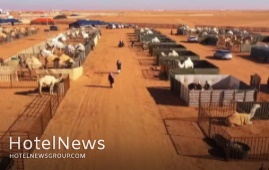
The Kingdom of Saudi Arabia is home to the first hotel in the world to serve and comfort camels. The hotel, called Tatman, includes 120 hotel rooms that provide all services to camels, local media from the gulf country reported on Sunday. According to Arabic daily, English Al-Arabiya, more than 50 people serve in this hotel and they are divided between room services, care, attention, and protection as well. Tatman hotel, provides a 5-star service, including preparing meals for camels, taking care of the appearance and general appearance, in addition to providing hot milk, and making sure to clean and heat the rooms. “This hotel is the first of its kind in the world, but in a different and new style. Everything is available ranging from cleaning rooms to warm air-conditioning,” the official spokesman for the camel club in Saudi Arabia, Muhammad Al-Harbi said in a presentation video.
Create: Jan 11, 2022 Edit: Jan 13, 2022 International News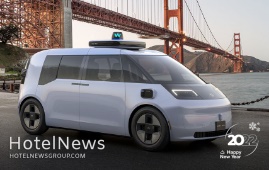
Alphabet’s self-driving car company Waymo is partnering with Chinese automaker Geely to create a fleet of all-electric, self-driving robotaxis. The cars will be designed in Sweden (where Geely owns Swedish carmaker Volvo) and will be adapted from Geely’s all-electric five-door Zeekr. Waymo will then outfit the cars with the hardware and software necessary for autonomous driving. Waymo said in a blog post that it plans to deploy the vehicles in the US as part of its existing fleet of self-driving robotaxis some time “in the years to come.” Concept images of finished vehicle shared by Waymo show a car that is designed specifically for autonomous ride-hailing trips. It has a flat floor, low step-in height, and B-pillarless design for easy entry and exit, as well as sliding doors, reclining seats, and plenty of headroom. Waymo says future models will have an interior without steering wheel or pedals — just a screen (presumably to let riders check on the progress of their journey). These are just concept images, though, and might not necessarily reflect the finished vehicles Geely and Waymo will eventually put on the roads. It’s notable that Waymo’s concepts make the car look much more like a minivan, while Geely’s Zeekr 001 has a design that’s more like a cross between a station wagon, a shooting brake, and an SUV. News of the deal between Geely and Waymo is another demonstration of just how busy the auto world is with partnerships and collaborations as self-driving and electric tech shakes up old incumbents. Waymo has partnered with Stellantis and Jaguar Land Rover to deploy and develop its autonomous capabilities, while Geely plans to take Volvo public as an all-electric company, after doing the same with its new Polestar brand.
Create: Jan 2, 2022 Edit: Jan 2, 2022 International News
Menus are an important aspect of the overall presentation of a hotel restaurant. Indeed, a whole book on proper menu design could be written, with inventory arrangements, fonts, graphics, spacing, types of paper, menu backings and all other stylistic concerns outlined as contributing factors for a guest’s overall appreciation of the dining outlet. The pandemic has thrown a wrench in this marketing and sentiment-boosting tool as many customers now expect menus to be accessible on their phones via a QR code. The benefit for the restaurant is certainly there in the form of saving on printing costs, but it’s nonetheless a tradeoff. The concern that we have over the proliferation of QR menus is that they don’t build guest satisfaction as much as their physical antecedents, and this reduced sentiment can halo back onto room revenues in a negative way. Here’s why: paper is palpable. You feel the slight roughness of a thick paper stock, subtly smell the ink, are delighted by the way the room’s lighting creates soft shadows on the page and are soothed by (what we ideally hope that you would use for your establishment) the touch of the leather menu backing on the palm of your hand. Viewing a menu on your phone gives you none of that. Yes, you get graphics, color and the ability to keep the webpage updated in real-time as inventory changes, but everything beyond the straight visuals are lost in the endless scroll of a two-dimensional screen. And building on this notion of scrolling, one critical difference is that a physical menu presents all items together for readers to consider, whereas a responsive webpage (over simply displaying a PDF version of the menu) will usually configure all items into a single column so as to keep everything legible and to avoid lots of pinching. This second drawback is one of perception, where a narrowly focused column on one’s phone can increase the observed length of the menu, resulting in patrons ‘dropping off’ before perusing the entirety of it. We see a similar trend in website readership where it falls precipitously after around the first quarter of an article or page. In sum, on digital-first menus, you have to put your most expensive items (or highest margin) items at the top or they will likely be missed. At this point, with the end of the pandemic still very much a question mark, optionality and fitting your theme is what works best. Paper menus should be readily presented at high-end restaurants so that the theme is congruent and customer satisfaction isn’t deteriorated, while at more casual settings a QR code access may be just fine. While there are both paper and labor costs associated with QR menus, you must still consider the above downsides.
Create: Jan 1, 2022 Edit: Jan 1, 2022 F and B
